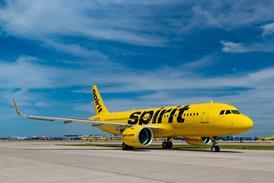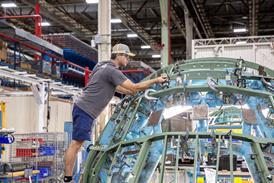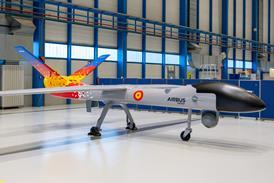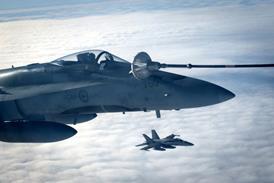Almost four years on from 9/11, the pilot training market has bounced back fully. But the legacy of the attacks has fundamentally changed the industry
The aftermath of 11 September 2001 was devastating for the airline industry – but the aviation sector hit hardest and longest was the pilot training business.
Not only did the demand for new pilots dry up almost overnight as airline cutbacks created a glut of furloughed aircrew, the fact that the 9/11 hijackers had trained at a Florida flying school led to US authorities introducing tough curbs on schools taking on foreign students. Many smaller establishments could not sustain the double hit, and closed for good.
The market is now becoming more stable – although the supply and demand curves for pilots are seriously out of synchronisation in the wake of 11 September. A lot of training stopped at that point, leading to a shortage of pilots two years down the line – by which time the airlines were again looking to hire. Only now, with courses picking up again, is the flow of qualified new pilots rebuilding.
But while the airline industry has recovered over the past four years, it has changed shape significantly. Low-cost carriers have grown in strength all over the world, and established carriers have had to adjust their cost bases to compete. The biggest global growth has come not from established regions like Europe and North America, but has moved eastward, to China, India and the Pacific Rim.
Strong demand
Demand for pilots remains strong at regional and low-fare airlines, as well as the fast-growing air cargo sector, which is being stimulated by increasing security requirements for shipping freight on passenger airlines and growth in e-business.
Richard Trussell, general manager of US flying school Phoenix East Aviation, says he has noticed an upturn in US airline hiring since the first half of 2004, with regional airlines including Air Wisconsin, CommuteAir, Mesa Airlines, Shuttle America and United Express leading the way. “It’s great to see the industry starting to bounce back and create employment opportunities,” he says.
However, the big US carriers are still not hiring: Delta Air Lines says it is “not currently recruiting for pilot positions”; while United has started offering use of its training centre in Denver to other airlines.
Despite cuts in recruitment post-9/11, carriers such as British Airways have ongoing demand to replace retiring pilots. Around 200 pilots step down from BA each year. In the UK alone, around 500 air transport pilot licences (ATPL) are issued every year. In the current jobs market, newly qualified pilots face strong competition, principally from furloughed pilots with greater experience and ex-military pilots with plenty of hours on modern jets.
One outcome of 9/11 has been a greater localisation of training. While a combination of low costs and good weather previously lured aspiring European pilots to US schools, gaining access to the USA to study is now much more onerous. Heightened security and background checks on foreign pilot trainees, imposed in the wake of the terrorist attacks, have dissuaded many from signing with US schools. In any case, some European schools believe the USA is not a viable option for European-standard pilot training due to the differences between US Federal Aviation Administration requirements and the European Joint Aviation Authorities standards, with their greater need for ground-school training.
US authorities moved late last year to simplify the checks by transferring responsibility for them from the US Justice Department to the Transportation Security Administration (TSA), a move intended to cut the time for processing an application from 45 to 30 days. Despite the efforts by US schools to assist overseas cadets gain the right visa, there are still problems.
“It is hugely bureaucratic now,” says Roger Ware, training co-ordinator at Bond Aviation, training arm of UK charter airline Astraeus. “There’s a trend toward overseas schools in countries such as Australia and South Africa, where the weather is good, but there is less bureaucracy.”
One of the largest training schools, the UK’s CTC Aviation Group, chose Hamilton, New Zealand for the location of its new 1,770m2 (19,000ft2) training facility, opened this April. The centre is designed for initial licence training for airline cadets and will enable the company to meet growing demand from airlines for graduates of the CTC Wings programme, a vertically integrated developmental airline pilot training scheme. Customers include Britannia, EasyJet, Monarch and Thomas Cook. CTC trains around 1,000 commercial pilots each year.
Currently 80 Wings cadets are progressing through their training at CTC’s centres in New Zealand and the UK. Cadets entering start their training at Hamilton, with extensive ab initio training that includes 285 flying hours – 100h more than the minimum European JAA requirements – including 74h of multi-engine training and a significant focus on line-oriented flight training, when the trainees learn to fly short sectors as part of a crew.
The opening of the Hamilton centre has allowed CTC to increase its cadet intake from six to eight a month. Chris Clarke, chairman of CTC Aviation Group, says: “We are seeing growing demand for Wings pilots from our airline partners. By increasing the cadet entry to the CTC Wings programme, we will be able to supply pilots in sufficient numbers to meet this demand. These new facilities give us the flexibility to support delivery of the multi-pilot licence [MPL] when this is introduced in 2006.” The MPL is a proposed professional licence scheme designed to take into account greater cockpit automation. It will involve greater use of simulators in training rather than flying of light aircraft.
Sponsor losses
The biggest impact of 9/11 for the pilot training industry has been the loss of their traditional customer base – sponsored pilot training for large airlines. Few believe it will come back. For the flying schools, it has been a case of reinventing the business model to survive.
Oxford Aviation Training (OAT), one of the UK’s largest schools, saw its three main customers stop new sponsorships almost immediately. BA and BMI at least allowed those students already part-way through their training to complete the ATPL course. Aer Lingus simply cancelled all training immediately, leaving its sponsored students to fund the remainder of their training themselves.
Of the 240 pilots a year that OAT trains on average, more than half were airline sponsored. Faced with the permanent loss of this business, the company had to reinvent itself. “We had to get ready for the next upturn – so airlines would want our graduates,” says OAT’s managing director Anthony Petteford.
In some ways 9/11 became a convenient excuse for large carriers to reshape their own businesses on a leaner basis to compete with low-cost carriers. These non-frills airlines had never sponsored their own pilots; outsourcing pilot training is a key element of keeping costs down.
In 2003 low-cost carrier EasyJet outsourced its new pilot training to CTC in a deal worth $100 million over seven years, believed to be the largest airline pilot training agreement ever signed in Europe. The airline hires between 240 and 290 pilots a year, and 40-50% of the first officers will be supplied via the CTC sponsored type-rating scheme.
In addition, 40 pilots annually will come from CTC’s ab initio cadetship training programme. These younger pilots arrive at EasyJet with a frozen ATPL and type rating and earn the flight hours to consolidate it on the line. CTC and EasyJet have introduced a form of “sponsorship” that involves cadets paying a bond of £60,000 ($105,000) to EasyJet, which is then repaid over time once they take up a position within the airline. Any costs above £60,000 are borne by the carrier – effectively capping the cost of gaining a licence and type rating, and representing a saving of around £15,000 to the pilot.
The growth of low-cost carriers means there are plenty of pilot career opportunities and the job is still attractive. Starting salaries are relatively low – an EasyJet first officer starts on £21,000 – but rise quickly; an EasyJet captain earns £54,000.
In 2002, the average annual earnings of airline pilots, first officers and flight engineers in the USA was $109,580, according to the US Bureau of Labor Statistics. More than 25% earned over $145,000 a year. It would seem there are still enough individuals prepared to pay the £50,000-100,000 it costs to gain an ATPL and type rating without the safety blanket of airline sponsorship – but the schools have to be careful who they select for their courses.
Wholesale change
“We’ve had to change from a wholesaler of training to a retailer,” says OAT’s Petteford. “We’ve had to sell 240 individual courses rather than just deal with 10 corporate contracts.” OAT has restructured itself around individuals who want to become pilots. Part of that has involved helping students to fund their training, while adding enough checks to ensure that pilots who qualify are trained to the standards that airlines require.
OAT has arranged a finance scheme with HSBC bank, through which student pilots can borrow the funding for their courses via a secured loan. More significantly, the school has introduced a three-day pre-assessment process to weed out unsuitable applicants. Petteford says: “We’ve introduced a structure that means we’d turn people away, but we wanted to assure airlines that our self-funded graduates were of a suitable quality.”
Maintaining links with the airlines has been crucial to the success of OAT’s scheme – while they may no longer be paying £55,000 per sponsored student, they are still in the market for pilots. Of the 90 pilots who have graduated since the scheme started in March 2003, 95% now have jobs as first officers.
OAT’s customer base is expanding – airlines from India and Oman are now taking OAT-trained pilots. Petteford thinks the new business model is here to stay: “I believe the wholesale market has gone for good,” he says. The airlines’ current attitude seems to back this view. Virgin Atlantic is recruiting pilots, but is looking for qualified aircrew with a minimum of 1,500 commercial jet hours. The carrier ran a sponsored cadet scheme in 1998-9, but has not repeated the exercise. “Our commercial commitments indicate it is unlikely to happen in the near future,” it says.
OAT has tried to reintroduce a level of “sponsorship” by involving airlines in the pre-assessment process, and tying students to the airlines in a way that they are guaranteed a job on graduation. OAT has even managed to get a financial contribution from some airlines for “their” pilots – but only a small fraction of the course costs.
If the market has shifted permanently from airline-sponsored students to self-funded individuals, costs become a crucial factor. Bond’s Ware believes students can cut costs through taking a modular course rather than a fully integrated one of the kind offered by the bigger schools.
Modular courses
Bond runs modular courses through Stapleford Flight Centre in Essex. By running the modules back-to-back – so the ATPL course starts the moment the pilot has gained a private pilot’s licence – Ware believes there is hardly any difference between a modular course and an integrated course – apart from the price, which can be up to £25,000 cheaper, depending on how much of the theory aspects of the course are undertaken through distance-learning.
That equates to the approximate cost of a type rating on a popular type such as an Airbus A320 or a Boeing 737 – and as low-cost airlines now usually insist that their new pilots have to fund their own type approval as well as their ATPL, going modular results in a worthwhile saving.
Bond was established three years ago. Carrying out its own training, and offering it to other airlines, was part of the initial concept of the airline Astraeus , set up in 2002 by former managers of low-cost carrier Go. “We had the expertise in-house, so why not use it?” asks Ware. Being part of an airline has a major advantage for students – they can carry out their required 40 sectors or 100h of line training in-house, as first officer trainees on Astraeus’s commercial flights, flying 737s or Boeing 757s. “We’re one of only two European airlines that can offer training and line flying to private students,” says Ware.
MARK BURSA/LONDON
Source: Flight International























